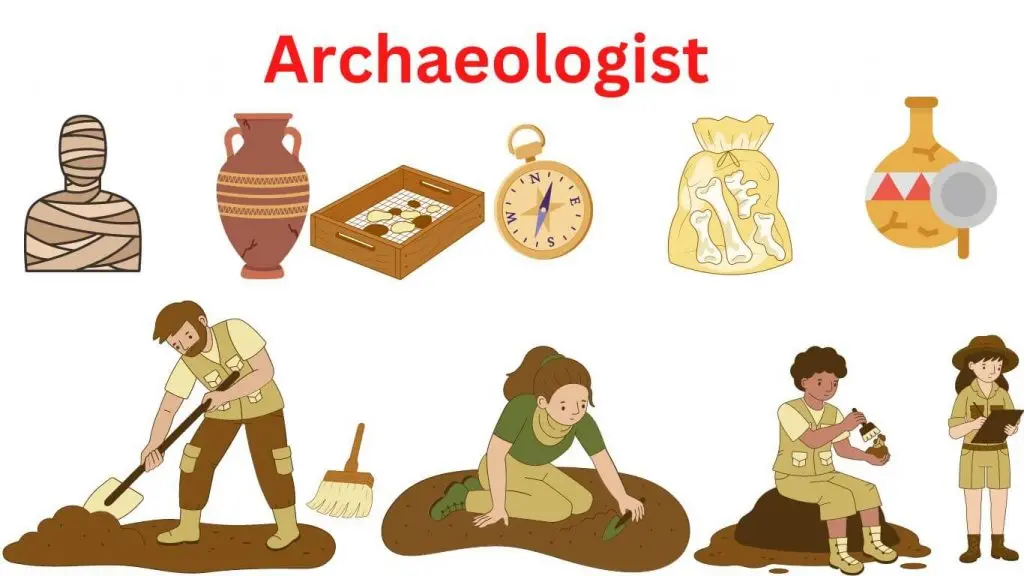
Introduction
Defining Archaeology
Archaeology, a branch of Anthropology, engages in systematic studies of past human societies by unearthing and analyzing vestiges of bygone eras. It ventures beyond excavating artifacts, encompassing deeper layers of civilization, including humans’ historical environment, architecture, culture, and technology. It opens a window to our ancestors’ existence, hence contributing to our understanding of human history and evolution.
Overview of the Different Types of Archaeology
In the realm of archaeology, various subfields have arisen, each focusing on different aspects of the past. The most prominent types include historical, underwater, environmental, ethnoarchaeological, and experimental archaeology. Each one of these subsets provides unique approaches and methodologies applied to unveil the mysteries of human history in diverse contexts.
Prehistoric Archaeology
Definition and Scope of Prehistoric Archaeology
‘Prehistoric Archaeology’ is a distinct subdivision of archaeology primarily concerned with the analysis and study of human history prior to the advent of written records. Given the absence of written documentation, prehistoric archaeologists primarily depend on physical evidences such as artifacts, structures, human remains, and landscapes to extract information about past societies, cultures, and human behavior.
The scope of prehistoric archaeology is comprehensive, spanning from the early human’s use of stone tools nearly 3.3 million years ago, through the Neolithic revolution, until the early civilizations. This discipline plays a crucial role in enlightening us about various stages and aspects of human evolution and development.
Significance of Prehistoric Archaeology
Prehistoric Archaeology is an integral branch of archaeology that studies human histories sans written records. This fascinating field grapples with history dating back millions of years which significantly contributes to our understanding of early human evolution, life, culture, and behavior. This discipline plays a vital role in piecing together ancient civilizations, as it reveals information from subtle traces like fossil remains, pottery fragments, tools, and other artifacts.
The research gleaned in this area sheds light on human development such as migration patterns, technological advancements, and societal structures. In essence, prehistoric archaeology is significant as it is our only window into understanding the world before recorded history.
Historical Archaeology
Definition and Scope of Historical Archaeology
‘Historical Archaeology’ delves into understanding the human past through the analysis of physical remains along with documentary evidence. Unlike prehistoric archaeology, historical archaeology encompasses eras that have written records and enables the correlation of historical documents with tangible artifacts. Its scope is expansive, encompassing studies of ancient civilizations, examination of colonial interactions, or exploration of industrial societies.
Techniques such as geophysical surveys, excavation, and laboratory analysis are employed to unearth artifacts from old sites, which are then interpreted in the context of supporting historical texts. Therefore, historical archaeology presents an integrated perspective of the past, deepening our comprehension of human history.
Importance of Historical Archaeology
Historical Archaeology is an essential aspect of archaeology that focuses on understanding human culture after the advent of written records. It plays a critical role in adding depth and detail to written history, often revealing additional layers of information not captured in historical texts.
Through the study of material remains, buildings, and artifacts, historical archaeology fills in gaps, verifies historical accuracy, and ensures a fuller understanding of past societies. By examining material evidence such as pottery or tools, archaeologists can trace technological advancements, economic shifts, and social changes, putting a tangible face to the past and offering a broader perspective on our shared human experience.
Key Examples of Historical Archaeological Finds
Historical Archaeology focuses on eras with documented records, greatly enhancing our understanding of human history. Key examples of historical archaeological finds have illuminated this discipline’s unique value. For instance, the excavation of Pompeii, buried by Mount Vesuvius’s eruption in 79 AD, offered remarkable insights into Roman life. Also, the discovery of the Rosetta Stone in Egypt, with inscriptions in three scripts, led to the deciphering of hieroglyphics.
The excavation of the Titanic wreckage, an iconic calamity of the 20th century, is another primary example. These finds highlight how historical archaeology bridges the gap between written history and the physical remnants of the past.
Related: The Fascinating Story Of The ‘Si-Te-Cah’ And The Lovelock Cave
Environmental Archaeology
Understanding Environmental Archaeology
‘Environmental Archaeology’ predominantly focuses on understanding the interrelations between ancient societies and the environment, which greatly influenced their living conditions and survival strategies. It delves into how our ancestors adjusted and adapted to climate changes, natural disasters, or shifts in flora and fauna.
Techniques such as palynology (pollen analysis) and dendrochronology (tree-ring dating) are employed to gather data about past landscapes and climates. This branch of archaeology also involves the study of plant and animal remains, typically referred to as bioarchaeology, to learn about ancient diet, agriculture, and animal domestication. With this, environmental archaeology serves as a crucial tool for exploring human-ecosystem relationships across history.
Impact of Environmental Archaeology on Our Understanding of the Past
Environmental Archaeology is a crucial sub-discipline that significantly contributes to our understanding of the past. It studies how humans interacted with their environment in ancient times, using elements such as soils, plants, and animal remains.
This field provides a unique window into prehistoric societies, including their dietary habits, cultivation and hunting practices, and effects on their ecosystems. The information gathered from environmental archaeology allows us to decipher climatic changes and understand how societal shifts were affected or influenced by these changes. It fills vital gaps in our knowledge, offering a more comprehensive picture of our ancestors’ lives and times.
Ethnoarchaeology
Definition and Purpose of Ethnoarchaeology
‘Ethnoarchaeology’ is a specialized subdivision of archaeology that builds an important bridge between past and present. It’s primarily interested in understanding how present-day societies use and interact with the material culture, to improve interpretations of a similar activity in the archaeological record. Ethnoarchaeologists often live with contemporary communities, meticulously studying their use of tools, rituals, and even trash disposal.
The purpose of ethnoarchaeology is to provide context and understanding to ancient cultures through observing and analysing the behaviour of contemporary societies, allowing archaeologists to build more nuanced interpretations about the past. It’s a vital tool in the archaeologist’s toolkit, offering invaluable insights that enrich archaeological studies.
Significance of Ethnoarchaeology
Ethnoarchaeology, a significant branch of archaeology, has revolutionized the way we understand the past. By studying contemporary cultures and their material culture, ethnoarchaeologists draw parallels with past civilizations, enabling a richer, contextual interpretation of archaeological finds.
Ethnoarchaeology helps in bridging the gap between the artifacts unearthed and the human behavior that led to their creation, use, and disposal. This valuable perspective helps in generating more accurate reconstructions of extinct lifestyles and societal structures. It’s a potent reminder that what we unearth is not just an object but a key to an unseen story of our shared human heritage.
Famous Ethnoarchaeological Studies
Ethnoarchaeology is a fascinating sub-discipline of archaeology that seeks to understand the cultural behaviors of past societies, mainly through studying and analyzing contemporary cultures. This field has contributed numerous influential studies, a few of which stand prominent. Among them, Lewis Binford’s examination of the Nunamiut Eskimos to understand hunting societies is a landmark.
Binford’s theory of ‘middle-range theory’ remains fundamental in archaeology. Similarly, the ethnographic study of ceramic production in traditional societies in Turkey and Nigeria by Ian Hodder has significantly contributed to our understanding of ancient pottery systems. These studies, among others, have been critical in bridging the gap between archaeology and anthropology.
Maritime Archaeology
Understanding Maritime Archaeology
‘Maritime Archaeology’ focuses on the study and preservation of artifacts, human remains, and structures existing below or at the water surface. This unique archaeological discipline covers everything from ancient shipwrecks and submerged cities to ports and other marine structures.
The preservation of these underwater relics in the absence of light and oxygen often leads to fascinating discoveries about our past, providing invaluable insights into maritime history, trade, warfare, colonization, and even climate change. Maritime archaeologists employ various underwater digging and mapping tools, as well as advanced technologies like sonar imaging and remote-operated vehicles, to unravel these submerged secrets.
Noteworthy Maritime Archaeological Discoveries
Maritime archaeology, a specialized discipline of archaeology, is known for some remarkable discoveries that have immensely diversified our comprehension of history. The 1985 discovery of RMS Titanic shed light on the luxurious life of the early 20th-century elites. The search and subsequent examination of the world’s oldest known shipwreck, the Uluburun, revealed a wealth of artifacts dating back to the 14th century BC.
In addition, the uncovering of the Mary Rose, King Henry VIII’s warship, provides extensive insight into the Tudor era’s naval capabilities. These invaluable discoveries have helped us understand more of humankind’s marine endeavors and historical heritage.
Importance of Maritime Archaeology
Maritime Archaeology is an integral branch of archaeology that studies human interactions with the sea, lakes, and rivers. It uncovers humanity’s relationship with water bodies, providing critical insights into past civilizations, commerce, warfare, and cultural practices. Notably, it involves exploring shipwrecks, harbors, maritime landscapes, and artifacts submerged underwater over time.
The importance of Maritime Archaeology lies in its ability to contribute significantly to our understanding of human history. It enhances our knowledge of seafaring techniques, ancient trade routes, and socio-cultural dynamics, giving us a holistic view of the past. Its findings significantly influence fields like history, anthropology, and environment, creating a confluence of interdisciplinary research.
Related: Who Built Göbekli Tepe And For What Purpose?
Industrial Archaeology
Scope of Industrial Archaeology
‘Industrial Archaeology’ delves into understandings from the Industrial Revolution and beyond. It explores historical, structural relics of an industrialized past, including factories, mines, warehouses, railways, and technology. This discipline analyzes industrial artifacts and infrastructures to gain insights into the socioeconomic dynamics of the industrial era. It encapsulates the scope of industrial transformations embodied in tangible heritage.
Importance of Industrial Archaeology
‘Industrial Archaeology’ plays a pivotal role in illustrating humanity’s industrial past. By studying artifacts, structures, and sites associated with industry and manufacturing, industrial archaeologists can shed light on historical technological advancements, socio-economic transformations, and environmental impacts, thus providing valuable insights into the evolution of modern industrial society.
Conclusion
Implication of The Different Types of Archaeology
In conclusion, each branch of archaeology, whether it’s Classical, Historical, Ethnoarchaeology, or Underwater, plays a vital role in the comprehension of our past. They hold unique implications for understanding the human story.
Classical archaeology helps reconstruct the golden eras of Greek and Roman civilizations, while Ethnoarchaeology bridges the gap between past and present, providing perspective on human behavior. Historical Archaeology delves into the written history era, offering an insight into the lives of our recent ancestors. Lastly, Underwater Archaeology uncovers unknown marine histories, revealing vital maritime studies. Together, these branches enrich our knowledge of heritage preservation and past cultures.
Future of Archaeology
In conclusion, the prospects for the future of archaeology are highly promising. With the advent of cutting-edge technology such as ground penetrating radar, carbon dating, satellite imagery, and underwater archaeology, we are now capable of unearthing and preserving our hidden past in ways never thought possible before. The field’s interdisciplinary nature will allow for more collaboration with other disciplines like sociology and anthropology, opening doors to new insights.
Yet, the growing awareness and respect for indigenous cultures’ rights and beliefs could also reshape archaeological practices altogether. In essence, the archaeology of the future will be a more inclusive, sensitive, and accurate reflection of our collective past.



